Sometimes, the most exciting place Victoria Levack can go is her bedroom. The decorations testify to the 30-year-old’s interests and aspirations. A constellation of photos of her with celebrities at Hal-Con, Halifax’s annual comic convention, fills one section. Figurines of superheroes and Disney princesses surround the room. Belle from Beauty and the Beast and Wonder Woman are her favourites: strong, intelligent women, ready to protect others. They both reflect parts of Levack’s personality, too. She spends much of her time advocating for adults with disabilities, like her, to have equal access to opportunities, whether that’s sexual education or, most pressingly, housing.
For the past decade, Levack has lived, reluctantly, at the Arborstone Enhanced Care facility in Halifax. She doesn’t dream of living in a castle; she just wants a bachelorette apartment where she can cook her own meals and choose recreational activities beyond bingo games with seniors.
You may unsubscribe from any of our newsletters at any time.
Spending her 20s in a long-term care facility was never Levack’s plan. She first moved to Halifax for university, looking for social and career opportunities that weren’t available to her in her small town of Berwick, N.S. But she got sick after she couldn’t receive adequate care while living in a university residence. Levack has spastic quadriplegic cerebral palsy. She needs help with dressing and personal hygiene. She drives her electric wheelchair with her right pointer finger and uses her left hand for everything else.
Levack returned to her parents’ home in Berwick, but she couldn’t find proper care there, either. As an adult, she couldn’t access supports she’d received during elementary and high school. She had some home care, but the workers wouldn’t always come when scheduled. Caregiving duties fell to her stepmother, who Levack says was often scared to leave the house for fear that her daughter wouldn’t have support. “The uncertainty of not knowing whether I was going to get help that day was terrifying,” Levack recalls.
One option she looked into was a provincial housing program for adults with disabilities. Three or four people share a home, and support staff come in on shifts or live in the building as well. Levack says she was told she didn’t qualify because her needs were too high. She moved to Arborstone instead. “I didn’t get to make a choice,” she says.
It’s isolating. Pre-pandemic, Levack limited her time at the facility to mealtimes and bedtime, spending her days meeting up with friends, volunteering with disability organizations, people-watching at coffee shops or going to the movies. The only recreational activities at the care home that she really enjoyed were the monthly dances. Yet even at those, she wouldn’t invite friends who live elsewhere. “I’m embarrassed by where I live,” she admits.
COVID-19 brought an end to social events and restricted her to her own floor. “We were the last group to get our freedom,” she says in early July, a day after spending time with her parents at the waterfront, her first outing since restrictions lifted.
The pandemic has taken a stark toll on Canadian long-term care facilities. Between March 1, 2020, and Feb. 15, 2021, more than 14,000 residents of long-term care facilities or retirement homes died due to outbreaks, accounting for more than two- thirds of COVID-19 deaths in Canada, reports the Canadian Institute of Health Information.
The crisis has prompted numerous reports detailing long-standing deficiencies in staffing, staff training and physical infrastructure, including proper ventilation. But the impacts on people with disabilities living in these facilities are less discussed. “Whenever we talk about long-term care, we talk about our elders and our seniors because that’s the standard population,” observes Levack. “They forget that we — young adults — also exist in this system.”
Levack is one of 87 Nova Scotians between the ages of 30 and 49 who live in long-term care facilities. Another 21 are under the age of 30, according to May 2021 data from the province’s department of health and wellness. Across the country, thousands of people well below old age are housed in institutions like nursing homes. In Ontario, for example, more than 4,700 long-term care residents, or 12 percent, were under the age of 65 in April 2021.
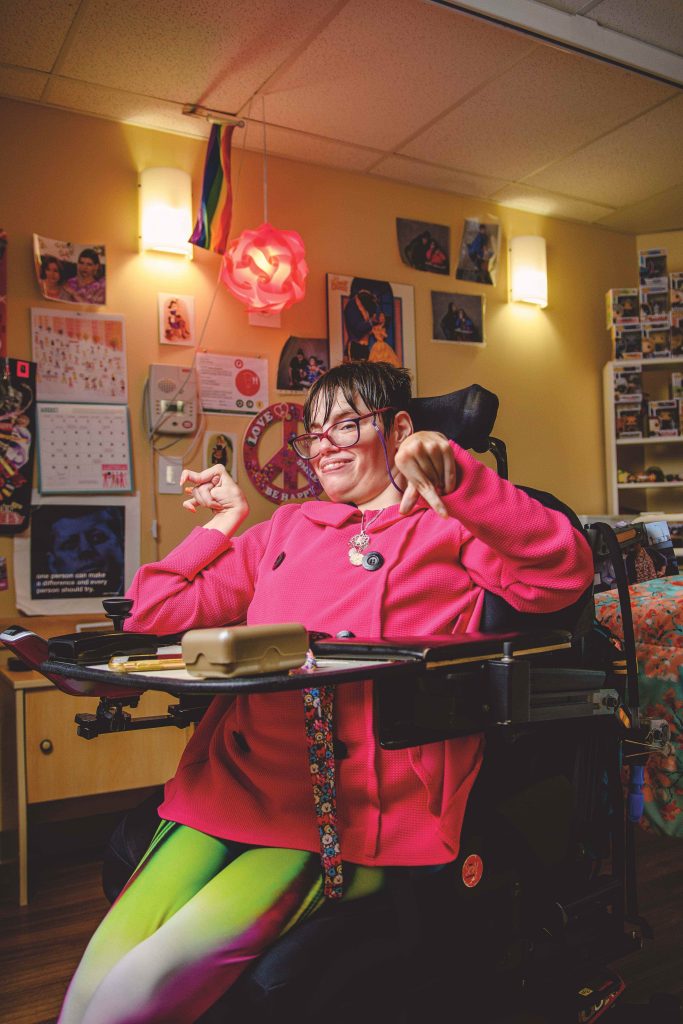
Like Levack, not everyone wants to be there. Some are hoping the outcry over long-term care facilities will bolster enthusiasm for government funding programs that make living at home a viable option. With direct, individualized funding, people with disabilities are given money to hire, train and schedule care staff, such as nurses or personal support workers. This money is separate from provincial or territorial disability supports that are intended to pay for shelter and living expenses, like food. But while advocates say that individualized funding can improve people’s lives — and in some cases even save them — it’s not without complications. Programs can be hard to access, and funding is often precarious. And money is only part of the solution. The most effective programs also incorporate support systems to help people manage their care and connect with their community.
Throughout the pandemic, Levack has been exploring how she can move out of her residence and get the supports she needs to live independently. COVID-19 has tested her resolve. “I have a lot more anger now,” she says. “I have a lot less faith in people. If this pandemic has taught me anything, it’s that people don’t view disabled people as full citizens.”
“If I said, ‘You’re 25 years old; we’re going to send you to a nursing home to live,’ you’d be outraged,” says Tim Stainton, co-director of the Canadian Institute for Inclusion and Citizenship at the University of British Columbia. “Why should the fact that the 25-year-old has a disability make a difference? Why shouldn’t we be outraged about that?”
Claire McNeil, a lawyer with Dalhousie Legal Aid Service in Halifax, says that living in long-term care impedes young adults’ ability to meaningfully participate in their communities. In her opinion, it’s a “classic” example of systemic discrimination — and a landmark new ruling by Nova Scotia’s top court supports that argument.
In October, the Nova Scotia Court of Appeal found that systemic discrimination occurred in a case involving three people with disabilities who were housed in a psychiatric hospital for years rather than being assisted to live in the community. “There is ample evidence…to support the conclusion that the manner in which the province provides social assistance to persons with disabilities…creates a disadvantage that is unique to them,” the judgment reads. The decision overturns a 2019 ruling by the Nova Scotia Human Rights Commission, which had rejected the broader claim of systemic discrimination despite finding that the government had harmed the three individuals by keeping them institutionalized.
“If I said, ‘You’re 25 years old; we’re going to send you to a nursing home to live,’ you’d be outraged.”
Tim Stainton, co-director of the Canadian Institute for Inclusion and Citizenship
McNeil represented the Disability Rights Coalition of Nova Scotia in both the original case and the successful appeal. She calls the October ruling “a significant breakthrough” in the struggle for equality. “This decision is the first of its kind in Canada in finding that a large group of people with disabilities have been systematically discriminated against over decades by their government,” she says. “[It] will affect hundreds of people living in institutions or relegated to wait-lists or denied meaningful access to the basic social assistance they require to live in community.”
Canada has ratified the United Nations’ Convention on the Rights of Persons with Disabilities, which states that people with disabilities have the right to “live in the community with choices equal to others.” This includes having access to a range of residential and community supports and being able to choose where and with whom they live.
The convention does provide a useful framework when discussing human rights, says McNeil. But there’s no Canadian statute that directly enforces it in the country, leaving compliance up to a patchwork of various laws and the courts. She hopes the new ruling will set an important example in Nova Scotia and beyond.
Individualized funding is not a new idea — it grew out of the movement away from institutions in the latter half of the 20th century. Unlike traditional models of home care, however, in which government funding flows to agencies that then provide services to clients, individualized funding gives money directly to people to purchase the supports they want and need. Today, all 10 provinces offer some form of direct funding, but the programs are often limited, serving only a small percentage of home-care clients. Advocates would like to see much wider adoption, arguing that anyone with a disability should have the option of direct funding.
For programs to succeed, individuals’ needs must determine funding; giving everyone who has a disability the same amount isn’t enough, explains inclusion advocate Tim Stainton. Recipients also need training on the logistics of managing payroll and schedules, and money to cover administrative costs, he says. Funding recipients will sometimes pay an agency to handle all the administrative tasks.
More on Broadview:
- Christianity has no patience for my chronic ailments
- Photographer aims to captures strength of young caregivers
- What my scooter taught me about barriers
Stainton says that providing individualized funding costs governments about the same, or less, than institutionalized care. “It’s relatively cost-neutral,” he says. “But on the benefit side, it’s much better.” A systematic review he co-authored in 2019 found that people with disabilities who received individualized funding reported positive outcomes such as improved self-image and community integration. Increased autonomy and control were also linked to better quality of life.
Fighting for individualized funding has lifted Jonathan Marchand out of despair and helped him imagine a future for himself. Marchand, 45, has lived in a long-term care facility in Sainte-Anne-de-Beaupré, Que., for eight years, after a bout of pneumonia when he was 34 devastated his health. Marchand, who has muscular dystrophy, was told he would need a ventilator and constant care for the rest of his life — and that these supports were only available in a long-term care home.
Marchand protested outside Quebec’s legislature for five days in the summer of 2020, camping out in a cage to demonstrate what his life is like in long-term care. As a result, he was promised the supports he needs to live on his own. But the journey out of what he calls his “medical prison cell” hasn’t been easy. His release from the facility was pushed back several times; he wasn’t allowed to train the staff who would be working with him because only nurses, and not personal support workers, are legally allowed to suction his tracheostomy, and it costs more to hire nurses.
Ultimately, Marchand thinks long-term care facilities should be closed. Until then, he’s advocating for himself and others to be able to hire and train their own caregivers so they can live independently. “We need to shift financial resources away from large-scale institutions into community solutions,” he said in July 2021, a month before moving to his own apartment.
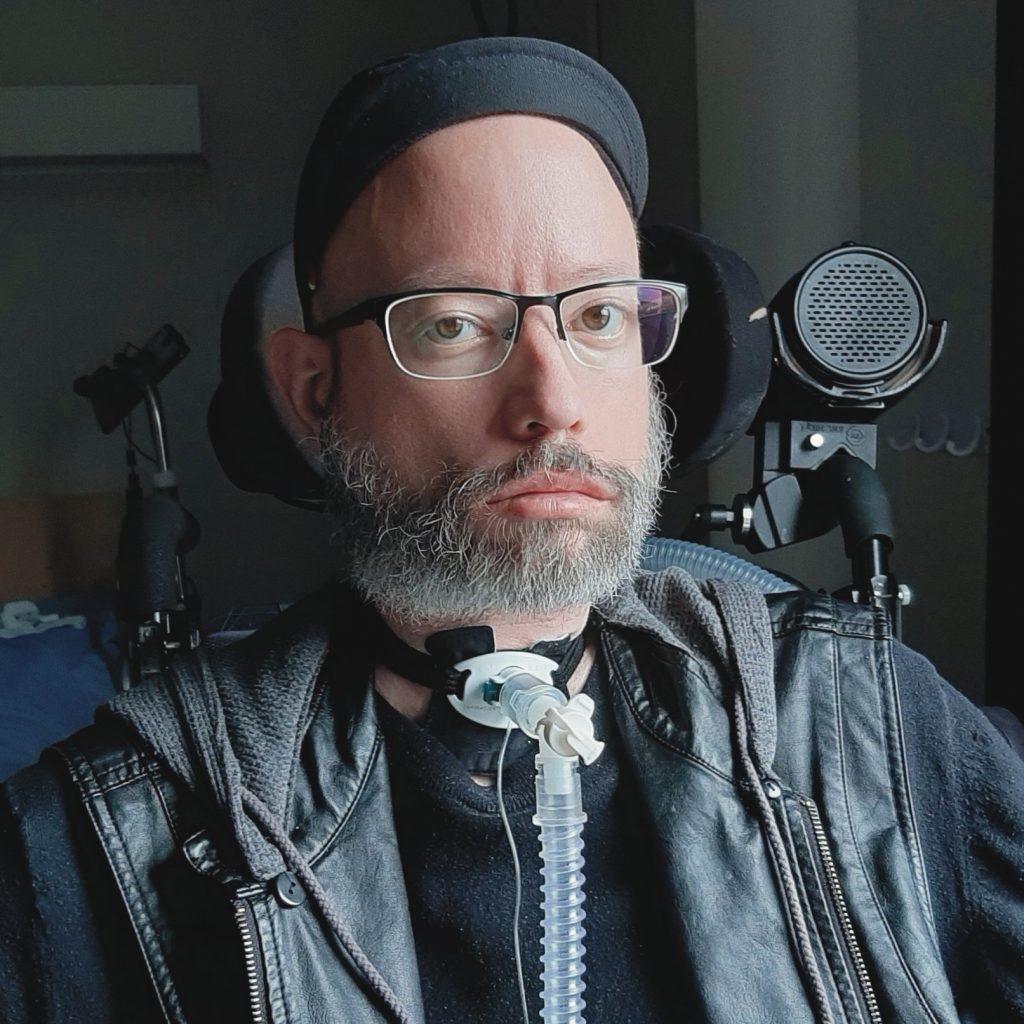
Stories of people who choose to die because they lack adequate supports haunt and motivate Paul Gauthier, a former Paralympian and the co-founder and executive director of the Individualized Funding Resource Centre Society in Vancouver. He knew a woman with a spinal-cord injury who decided to have a medically assisted death last year because she didn’t want to live in a long-term care facility. He grieves her loss.
“People are utilizing medical assistance in dying because they feel like they’re being a burden to their family or friends,” says Gauthier. “MAID should not be an option if supports could solve the problem.”
Gauthier’s resource centre helps people apply for Choice in Supports for Independent Living (CSIL), an individualized funding program that allows British Columbians with physical disabilities to arrange the support services they need. The centre’s staff can also handle administrative tasks associated with the funding.
“I have a lot less faith in people. If this pandemic has taught me anything, it’s that people don’t view disabled people as full citizens.”
Victoria Levack
Gauthier helped develop CSIL and uses it himself. Created in 1994, the program assisted 956 people in 2015- 16, providing an average of $7,360 per month to pay for home-care workers and other services, according to a recent study of direct funding programs by the University of Manitoba’s Centre on Aging. Notably, 80 percent of clients were under age 65.
The difference between traditional home care and CSIL is “night and day,” says Gauthier. He notes that often people don’t apply for the funding because they aren’t given information about it or become intimidated by the administrative work it involves. But the province allows those who use CSIL to designate someone to be their representative, he says, enabling those with a range of cognitive abilities to participate. “We really, really believe that all people with disabilities can be on individualized funding through the CSIL program in one way or another.”
Securing proper funding can help people live independently, but it does not automatically produce stability. Chloe Atkins has used direct funding in both Alberta and Ontario and is quick to suggest it to others. But she’s aware that her life is built on a rocky foundation.
“I live better than most people, but it looks better than it is,” she admits from the Toronto condo that she shares with her spouse and two of her four children. In 2018, she started receiving direct funding from the provincial government to hire personal support workers to meet her needs, whether that’s stocking the freezer with homecooked meals or showering.
Atkins, who has a PhD in political theory and a post-doc in law, leads a University of Toronto research team that is examining the experiences of self-employed people with disabilities. Her position is volunteer; she lives off a disability pension.
Finding a wheelchair-accessible condo with space for her family was difficult. She worries about money. “We’re servicing the largest mortgage of our lives,” Atkins says.
Yet she’s determined to not return to the “hell” of long-term care facilities. She lived in a now-closed Toronto residence for a few months between 1999 and 2000. Atkins, 34 at the time, was struggling to find proper medication for her myasthenia gravis, an autoimmune disease that weakens the skeletal muscles. She can go from appearing “normal” to being completely paralyzed and relying on a ventilator, she says.
Eventually, she improved enough to leave the facility. She worked as a university professor in Alberta for two decades before returning to Toronto in 2016 for health reasons. But she remembers the indignity of helping her visiting children with homework while the smell of feces from residents’ unchanged diapers hung stagnant in the air.
Now, she lives with the fear that her disability supports will be reduced. “There’s such jeopardy, even if you don’t live in long-term care,” Atkins says.
Joseph Arnold’s life during Ontario’s pandemic lockdowns was fairly typical. He frequently walked around his neighbourhood; he attended non-profit board meetings via Zoom; he talked to his brothers in Mexico City and Los Angeles over Skype; he visited with his elderly mother outside his co-op apartment building in Toronto. But undergirding these daily activities was a sophisticated network of paid and unpaid supports that ensured Arnold could live in his own apartment.
Arnold, 49, has cerebral palsy. He needs help eating, dressing and toileting. He walked when he was younger, but he’s used a wheelchair for years. He’s been involved with Neighbours Allied for Better Opportunities in Residential Support (NABORS) since the non-profit began more than 30 years ago. The agency, which receives its core funding from the Ontario government but also accepts donations, helps adults with developmental disabilities to live independently. NABORS employs personal support workers (so it’s not a direct funding model), but Arnold and the other 11 supported individuals choose the staff who will work for them and create their schedules and duties. Each supported member must also have an unpaid support circle — a group of family, friends and sometimes former NABORS employees that helps them make decisions.
More on Broadview:
- StopGap’s Luke Anderson on the barriers within us
- Book argues the need for new stories about disability
- Two Canadian disability advocates on righteous anger
Arnold communicates by pointing to pictures in his communication book — some are of friends and relatives, some are graphics of ideas and objects — and through a combination of American Sign Language and homemade gestures. His staff and support circle members help others understand what he’s saying. Not all of them get it right every time, Arnold says, joking.
More than a decade ago, Arnold decided he wanted a personal support worker to spend the night in his apartment so he wouldn’t have to worry if his morning support was late. His circle helped him arrange overnight support and assisted with his move into a two-bedroom apartment so the support worker would have a place to sleep.
“We’re messy, but it works,” says Gail Jones, NABORS’ executive director. Each person’s situation is unique, and there are many details to co-ordinate. Beyond their paid care, each supported member must receive a minimum of 15 hours of unpaid help a week. Some might receive more. The pandemic reinforced the importance of informal supports. “It’s been a safety net,” she says. Circle members reached out virtually to supported members and helped them find activities they could do that limited their risk of contracting COVID-19. In some cases, circle members showed up in person to check on supported members. “Circles were there for people again and again,” says Jones.
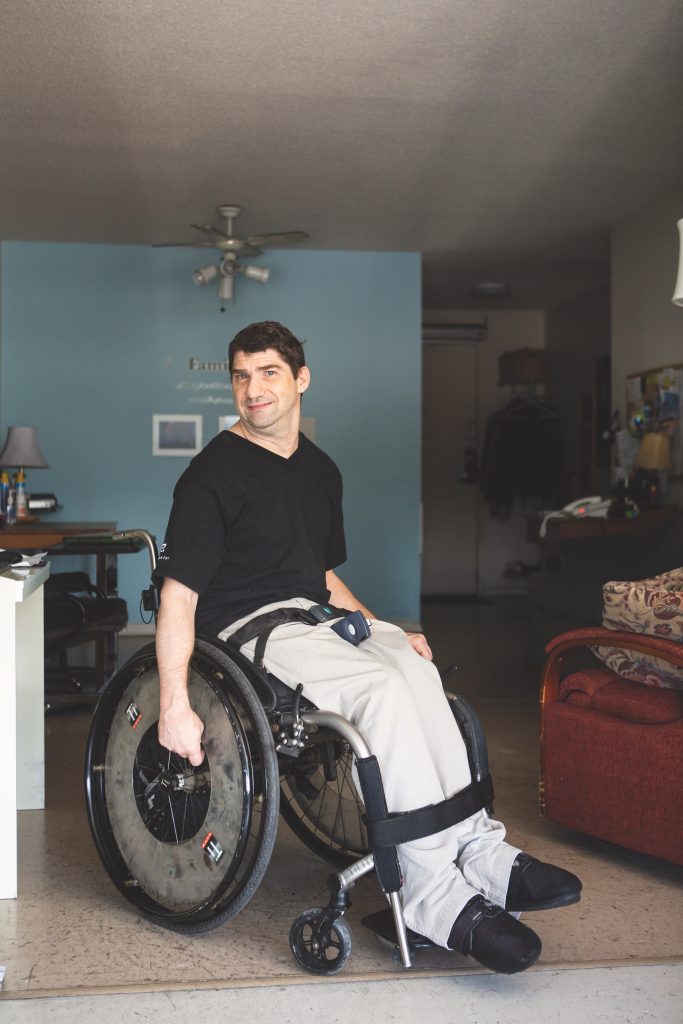
Each of the people NABORS supports has a different circle. Most have seven or eight members, but Jones says she’s seen them range from four to 20. Sometimes, circle members move away for school or work. If someone in Arnold’s circle leaves, he decides who will replace them. Bruce Kappel became part of Arnold’s circle in 1994, when he was researching the history of NABORS.
“Joe nailed me in the middle of a meeting and made me get down on one knee and asked me to join his circle. It was kind of a reverse proposal,” Kappel recalls. “I agreed to come to one meeting and see how it went. I think it went well.”
Officially, Kappel helps Arnold communicate, but often, he’s inviting someone else into the pair’s ongoing conversation fuelled by decades of inside jokes and memories. They’ve spent more than 20 years laughing about the time Kappel left the wheels of Arnold’s wheelchair in the snowbank after a meeting. (Thankfully, they quickly returned to find them.)
But the laughter stops when Arnold starts talking about how he sometimes wonders if his life would be easier if he moved to a long-term care residence. Arnold likes his support circle, but hiring and scheduling staff can be stressful. And while he wouldn’t be able to decide what to eat if he lived in a facility, at least he wouldn’t have to wait for the elevator to get fixed like he does in his co-op building. (Only one person NABORS has supported has ever moved to a long-term care residence, says Jones: a senior woman who decided she wanted to. Members of her support circle still visit her regularly.)
Kappel chokes up when he hears Arnold musing about long-term care. “When things feel confusing or out of control, you [can] call me,” he tells him. “Does that help?”
“Yeah,” Arnold responds.
“Yeah?” Kappel echoes, regaining his composure. “Good.”
In August, Victoria Levack learned her dream was coming true. She was approved to be part of a pilot project, funded by the Nova Scotia government, in which four adults under the age of 50 who need high levels of physical care because of their disabilities would be given 24-hour assistance to live in condos in the community. Two individuals would share each condo. The plan is for her to move into her new home in late December or early January. All participants have been told they won’t have to return to long-term care unless their needs significantly increase, Levack says.
“I want to be able to live a normal life,” she says, listing all the everyday, “western kind of hard” problems she expects to encounter: ensuring her laundry is done, creating meal plans. (She wants to have three-cheese tortellini with feta, pesto and red peppers for her inaugural meal at the apartment.) But her enthusiasm is tempered by apprehension.
“I’m feeling a lot of pressure to get it right,” Levack admits. “If this project doesn’t get extended, hundreds of people will be stuck in institutions, and that’s terrifying. I will have gotten out, but I’ve got no one else with me, except for the other people [in the pilot]. I have to get this right for the rest of us.”
Once she crosses Arborstone’s threshold on moving day, she’s not planning to return — even for visits or the dances she used to love. “I am never stepping foot in here again.”
***
Meagan Gillmore is a freelance journalist in Ottawa and a master of journalism student at Carleton University.
This story first appeared in Broadview’s December 2021 issue with the title ”I didn’t get to make a choice.”

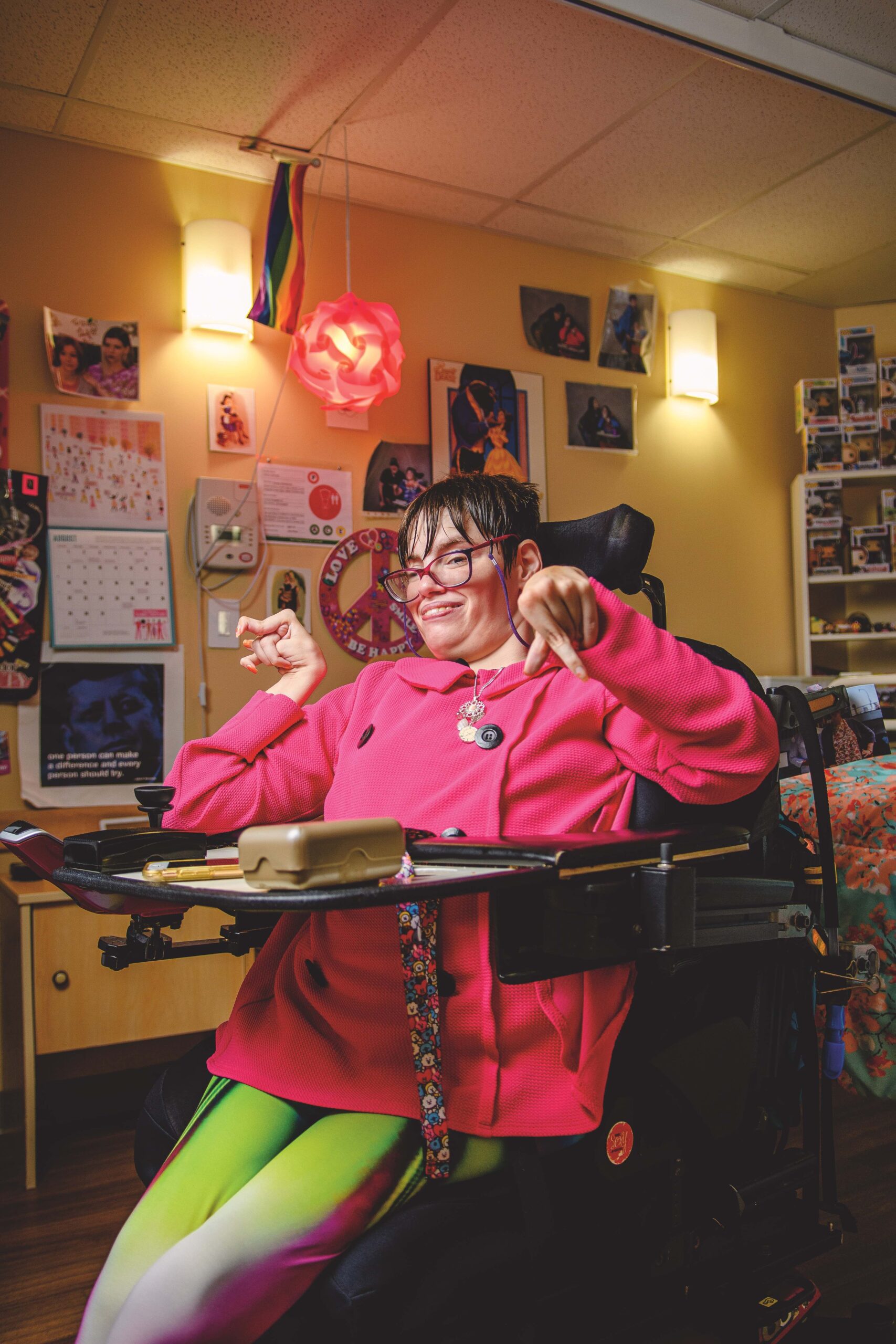









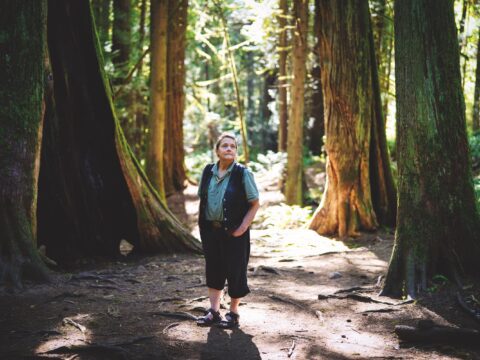



I think it is discriminatory and ageist that adults over age 50 who need high levels of physical care because of their disabilities are not offered the same type of arrangements and accommodations and provided with 24-hour assistance to live in condos in the community.
Young folks aren’t usually offered that level of community-based care either. Certainly the lady who “chose” MAiD wasn’t offered the care she needed to manage in the community. That was the whole point of the story. It’s also rather ageist and/or ableist to pretend that older adults are the only people in need of long-term care.
I’m sorry if this comment seems arrogant, Lord help me (I do mean that literally)
If my comment I posted earlier makes it through the admins, then I just want to say that I’m genuinely sorry for it now. It’s not you I’m fed-up with, and you do have a point. Not an excuse, but I feel really frustrated sometimes when my elderly relatives have to take care of me because HomeCare either can’t or won’t. Especially since it seems easier in this country to be “assisted” in suicide then to get adequate suicide prevention with a severe disability.